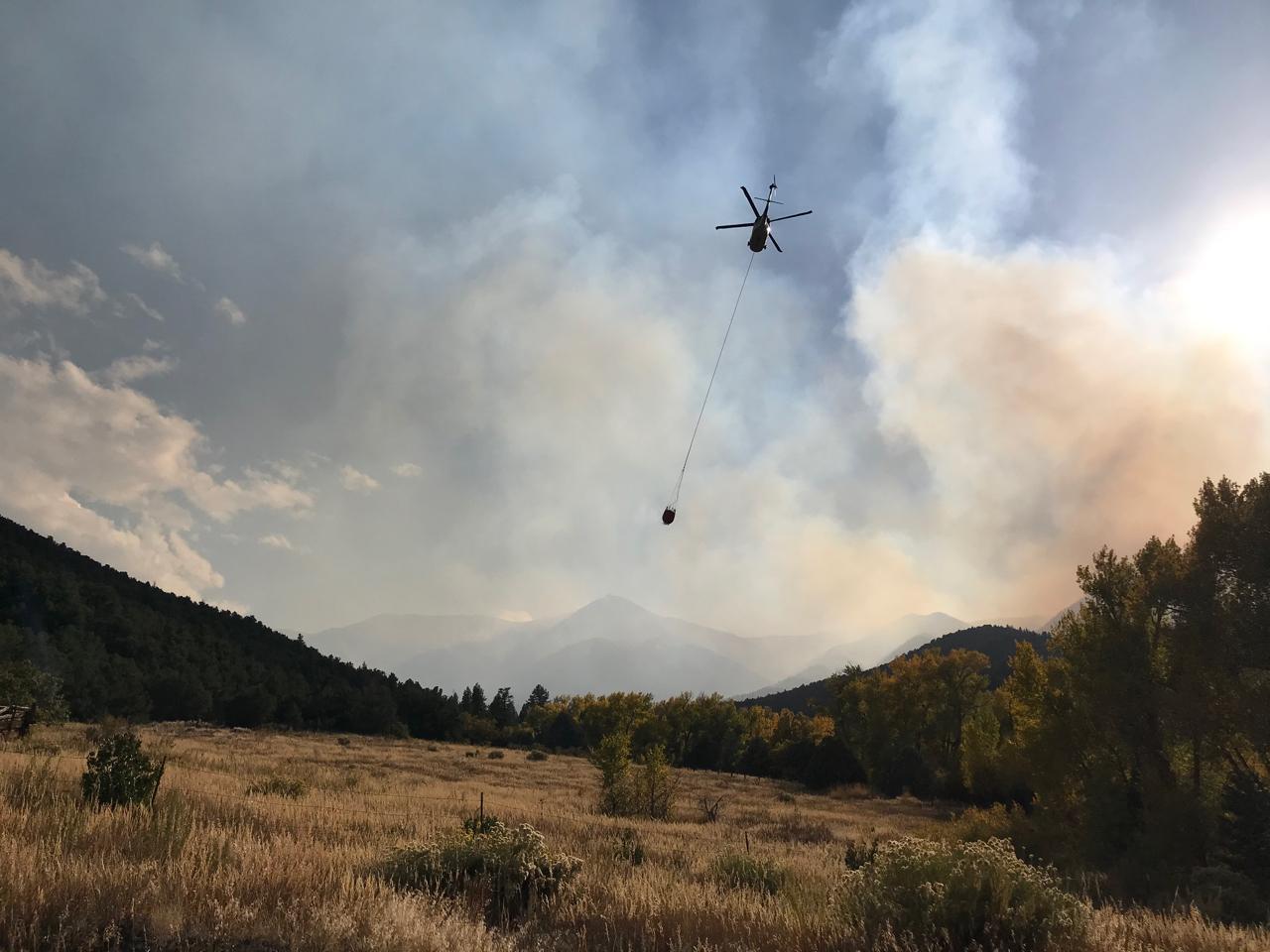
The Decker Fire shows no signs of slowing down after wind pushed it over containment lines and it grew about 1,000 acres over the weekend.
The fire, south of Salida, is now more than 8,000 acres and is 30 percent contained.
Nearly 200 fire personnel from Oregon and an air tanker from California are coming to help fight the wildfire that has been burning in the Sangre de Cristo Wilderness for more than a month.
Rick Barton, a public information officer, said the firefighting plans will stay the same but with more help.
“The strategy remains to strengthen and hold the lines to the east side of the fire so the fire doesn’t continue to move east as well as cool down and secure the rest of the fire,” Barton said.
To help, there are seven helicopters and two air tankers. The air tankers drop retardant to slow the fire’s progress down to strengthen lines. The helicopters are dropping water to cool down the area.
Sunday afternoon, an ember crossed the containment lines on the northeast side of the fire and started a spot fire. It grew quickly and expanded about 30 acres into the Bear Creek area where there are homes. Firefighters who were in the immediate area pulled back for about an hour before resuming work.
Evacuation orders are ongoing for parts of Chaffee and Fremont counties including Swissvale, Wellsville, the residents of Bear Creek and people who live on Silver Heels Drive.
The Colorado Department of Public Health and Environment issued an air quality advisory until 4 p.m. Monday for Salida and along the Northern Arkansas River Valley just north of where the fire is burning.
Amy Ortega, a meteorologist for the department, said it is likely that it will be extended.
Winds that whipped the fire over the weekend were coming from the west at up to 30 miles per hour. The gusts are expected to keep up this week.
Those winds are pushing smoke to the east which increases fire activity and smoke production. During the day, it’s harder to see the plume because the winds are brisk, which makes the smoke disperse. However, at night, the extra fire activity and smoke production cause the smoke to go to low-lying areas east of the fire.
People who have respiratory or cardiovascular issues are advised to take extra precautions. Ortega said that if someone has to be outside, it’d be a good idea to have a high-filter mask.
“A regular painting mask won’t block the smoke because the size of the smoke particles are so tiny they can get through a regular mask or even a bandana,” she said.
She also advised people to stay indoors and keep all windows closed. She said that just being inside doesn’t significantly reduce smoke exposure because the particles are so small. Because of this, using an air filtration system in a closed-off room is recommended.
The Decker Fire began Sept. 8 from a lightning strike.









